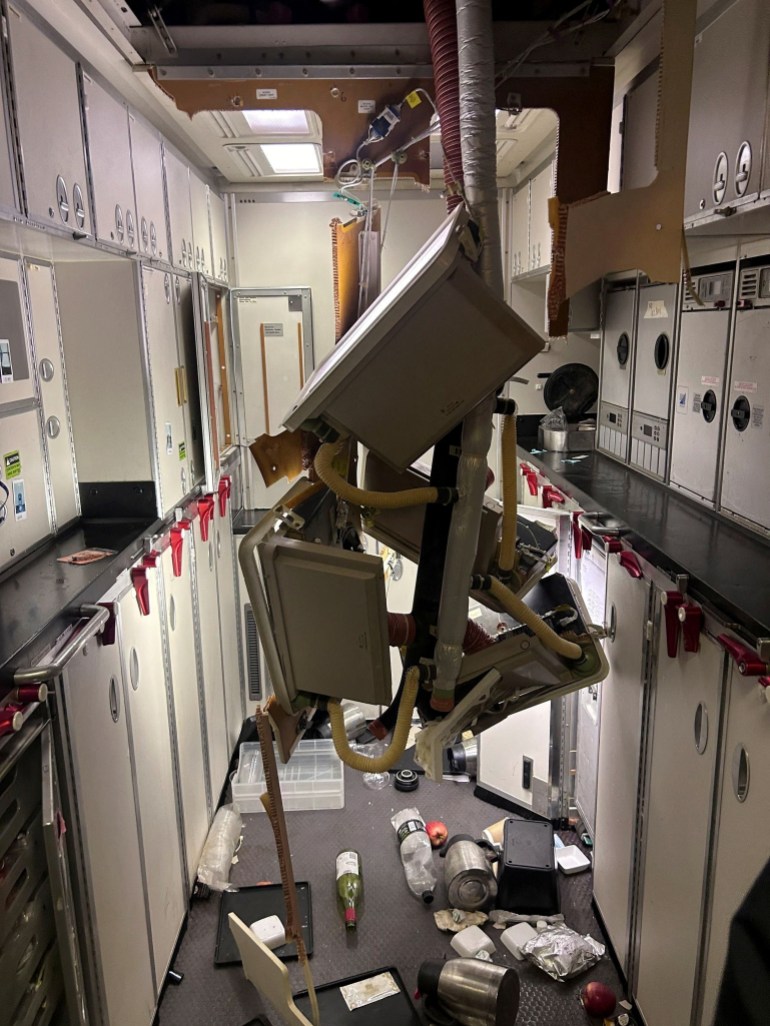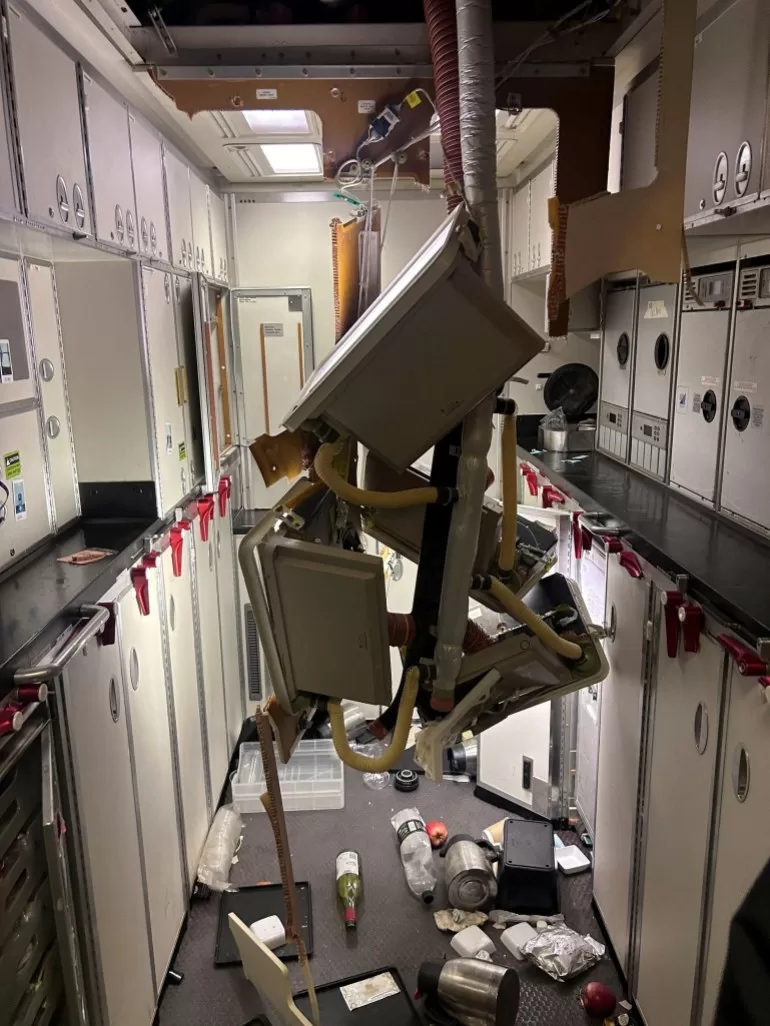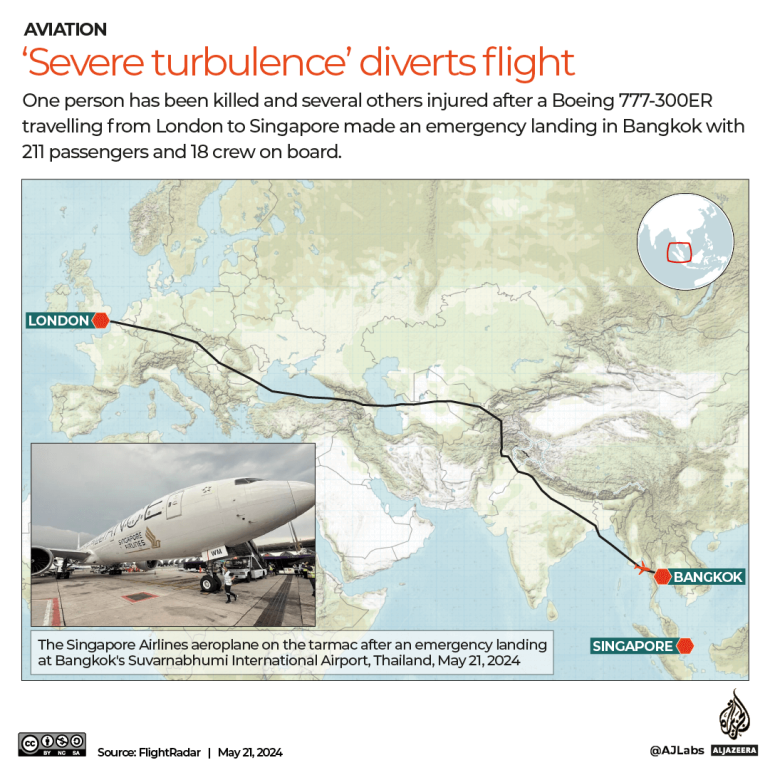The Boeing 777-300ER carrying 211 passengers and 18 crew members made an emergency landing in Bangkok. Kitchen went into cardiac arrest and ultimately died. At least 71 others were injured and 20 people are still in intensive care units in Bangkok.
But how often do such injuries and deaths happen, what is air turbulence, is it getting worse – and does climate change have a role in all of this?
How often does air travel lead to injuries?
Compared with the millions of flights that take to the skies each year (40.1 million forecast for 2024), what happened on SQ321 is rare.
In the United States, the world’s largest air travel market, there have only been 163 injuries between 2009 and 2022 that required hospitalisation, according to the Federal Aviation Administration.
The National Transportation Safety Board hasn’t reported a single turbulence-related death on a large-body aircraft in that period.
It’s also almost unheard of for turbulence to bring down an aircraft – let alone a commercial one. Although a plane did crash in 2001, it was because of a technical error and not directly related to turbulence.
That was American Airlines flight 587 from New York’s JFK to Santo Domingo, Dominican Republic. The NTSB confirmed that turbulence caused a failure in the aircraft’s vertical stabiliser.
What causes turbulence?
Turbulence is essentially a disturbance in the air and there are several different types and reasons why it occurs. Terrain like mountains can shift airflow and air is forced to rise over natural terrain that can cause waves of air that trigger turbulence.
While weather events can affect turbulence as well, the one that causes the most concern is called clear-air turbulence or CAT.
“It can be caused by what are called gravity waves that cause undulations in the air that you can’t see. The only way pilots know about it is to hear about it from a previous pilot. Pilots often listen to what a person who took that same flight path a few minutes earlier say. That’s the best way to detect these turbulence events,” Ramalingam Saravanan, head of the department of atmospheric sciences at Texas A&M University, told Al Jazeera.
Have instances of turbulence risen – and is climate change responsible?
A study from the University of Reading in England published last year found that between 1979 and 2020, clear-air turbulence rose by 55 percent over the North Atlantic, one of the world’s busiest flight routes. Warmer temperatures can affect wind patterns. The report asserts that greenhouse gas emissions are largely to blame.
That’s echoed by researchers at the University of Chicago who forecast that warming temperatures could lead to higher wind speeds in the “fastest upper-level jet stream”.
The study suggests that speeds will increase by 2 percent for every degree Celsius the world warms, which is expected to increase by 4 degrees Celsius by the end of the century if greenhouse gases continue to rise at the same level.
The global temperature has increased by at least 1.1 degrees Celsius since the pre-industrial era. Over that period, the biggest surge has been since 1975, according to NASA.
The University of Chicago researchers say that because of the expected record-breaking wind speeds, airlines will need to slow down speeds to limit the safety impacts of turbulence.
Turbulence is expected to increase most drastically in the North Atlantic – the key route between North America and Europe, but there is also a massive surge expected in southeast China, the western Pacific, and northern India. A 2021 study by Nanjing University in China forecast a 15 percent increase in instances of CAT by 2059.
The surge in the Asia Pacific region is an increasing concern for the airline industry. China is expected to overtake the United States as the most passenger by volume air travel market by 2037.

Who is worst hit when planes suffer from turbulence?
The problems with turbulence are more about the safety of the people on board than the plane itself and happens mostly when customers and flight crew are not properly buckled in.
Flight crew accounts for 79 percent of all turbulence-related injuries.
“Turbulence is a serious workplace safety issue for Flight Attendants,” Sara Nelson, president of the Association of Flight Attendants-CWA, AFL–CIO said in a statement.
“While details of Singapore Flight 321 are still developing, initial reports seem to indicate clear-air turbulence, which is the most dangerous type of turbulence. It cannot be seen and is virtually undetectable with current technology. One second, you’re cruising smoothly; the next, passengers, crew and unsecured carts or other items are being thrown around the cabin,” Nelson added.
Does air turbulence hurt airline profits?
Despite how rare turbulence-related disasters are, turbulence costs the airline industry up to $500m annually. That accounts for damage to the plane and its cabins, delays and the occasional liability payment. With it being more common in the years to come, costs will add up.
Under the 1999 Montreal Convention, airlines were also to be held financially responsible for injuries incurred on board by turbulence including for damage to luggage as well as personal injury and even death.
“The convention sets forth the jurisdictions where the respective plaintiffs can bring their case, and that’s going to vary based on analysis of each of the passengers’ factual situation. They’re entitled to full compensatory economic damages,” Ladd Sanger, managing partner of Slack Davis Sanger, a Texas-based personal injury law firm with extensive experience in aviation accidents, told Al Jazeera.
Airlines are required to comply and pay affected consumers with what are called special drawing rights or SDRs. That’s a reserve asset established by the International Monetary Fund and depending on the nationality of those injured, it can be exchanged for their respective currency.
Thanks to the Montreal Convention, airlines are required to pay out the asset unless they can prove that an injury was a result of passenger negligence. The specific policy can vary slightly depending on what carrier passengers fly on.
Singapore Airlines says in its terms of service that:
“There are no financial limits for death or bodily injury. For damages up to 113,100 SDR [the equivalent of US$149,720.22 today], the carrier cannot contest claims for compensation. Above that amount, the carrier can defend itself against a claim by proving it was not negligent or otherwise at fault.”
Airlines often settle out of court on these matters, according to Sanger, who has helped dozens of clients in cases like these.
But these lawsuits put a strain on airlines because the industry has fairly tight margins, meaning every dollar matters. In December the International Air Transport Association (IATA), a trade organisation representing airlines across the world, touted what it expects to be record profits this year at 2.7 percent profit margins while still pointing out how tight that is.
“Industry profits must be put into proper perspective. While the recovery is impressive, a net profit margin of 2.7 percent is far below what investors in almost any other industry would accept,” said Willie Walsh, IATA’s director general, in a release in December 2023.
By comparison, the rail industry boasts a 50 percent profit margin.
“On average airlines will retain just $5.45 for every passenger carried. That’s about enough to buy a basic ‘grande latte’ at a London Starbucks. But it is far too little to build a future that is resilient to shocks for a critical global industry,” Walsh added.
Airlines are subject to major fluctuations in jet fuel prices which can sometimes make up as much as 25 percent of the industry’s expenditure. Airlines also must consider what’s called “load factor” when determining profitability. That’s essentially the formula that shows how full a flight has to be, and what prices and how expensive tickets need to be in order to make money.
In 2020, Forbes reported that to break even, airlines need to have a load factor in the range between 72.5 percent and 78.9 percent. As of January 2024, the average load factor is 78.4 percent, according to the St Louis Federal Reserve Bank.
What does the Singapore Airlines incident mean for Boeing?
But the atmospheric turbulence comes alongside a turbulent time for the airline industry and especially one of the two main aeroplane manufacturers, Boeing.
A slew of high-profile incidents involving Boeing aircraft, and consumers’ gut reaction to the news, seems to attribute blame to the plane maker rather than any other factor. Many users on X say they’re opting not to fly on Boeing-made aircraft when they travel.
At this point, if the flight is Boeing I’m not booking https://t.co/D8AJ4ZY5r1
— Ezechiel. (@ezyarts1) May 21, 2024
“It doesn’t really matter if the aircraft manufacturer or the airline company had anything to do with the incident. When it comes to brands … the consumer perception is what matters most. And the perception right now is that Boeing makes unsafe planes,” said Andrew Graham, founder and head of strategy at the public relations firm Bread & Law in New York City.
In January a panel blew out mid-flight on an Alaska Airlines 737-MAX9 flight between Portland, Oregon and Ontario, California. In response, the airline grounded all 65 Boeing Max 9 jets in its fleet. In March, a United Airlines flight between Denver and Paris had to be diverted after an engine failure. In April, a Delta Airlines Boeing 767 bound for Los Angeles from New York’s JFK had to make an emergency landing shortly after takeoff because an emergency slide came apart.
Against that backdrop, only 9 percent of consumers trust Boeing, according to a Morning Consult poll from March. Now booking platforms like Kayak have added features that allow consumers to search for flights by aircraft manufacturer.
As Boeing’s safety record came into question, multiple whistleblowers were found dead.
Despite image issues, when it comes to Wall Street, most major firms still have not downgraded the stock. That suggests that Wall Street is not worried about the cornucopia of issues facing Boeing in the eyes of general consumers.
“I think a lot of the bad news is priced in … And if they start positively surprising on, you know, quality improvements in production, you could start to see that go the other way ” Bert Subin, senior research analyst at Stifel Financial Corp, told Al Jazeera.

